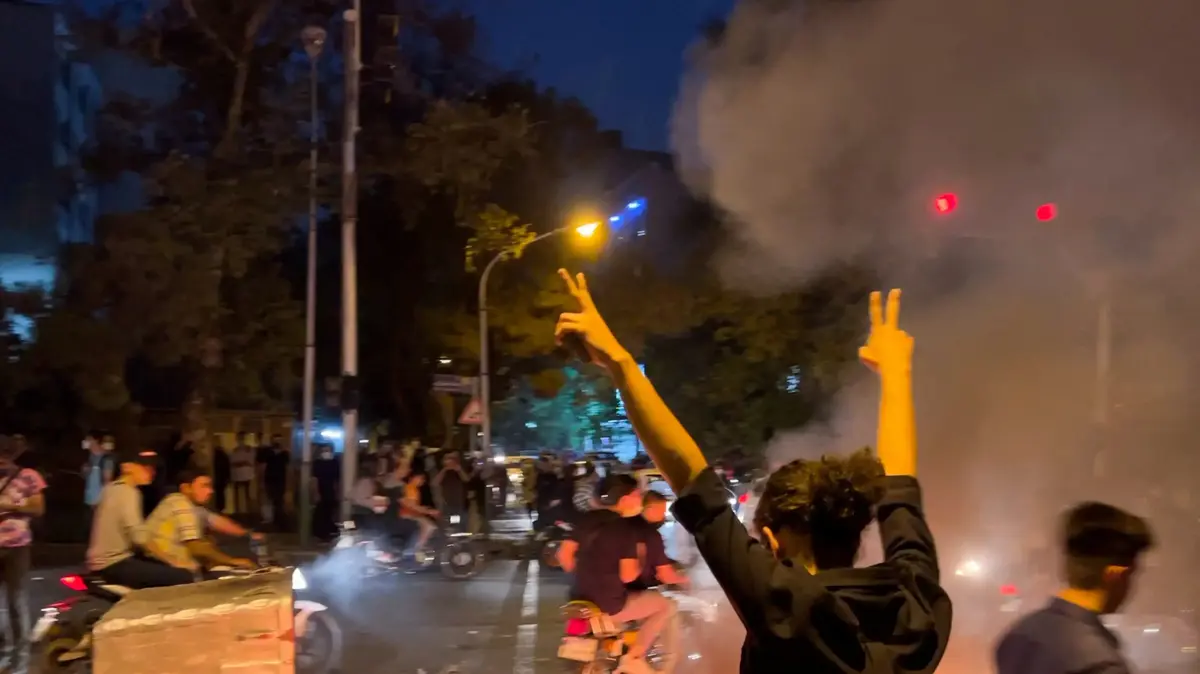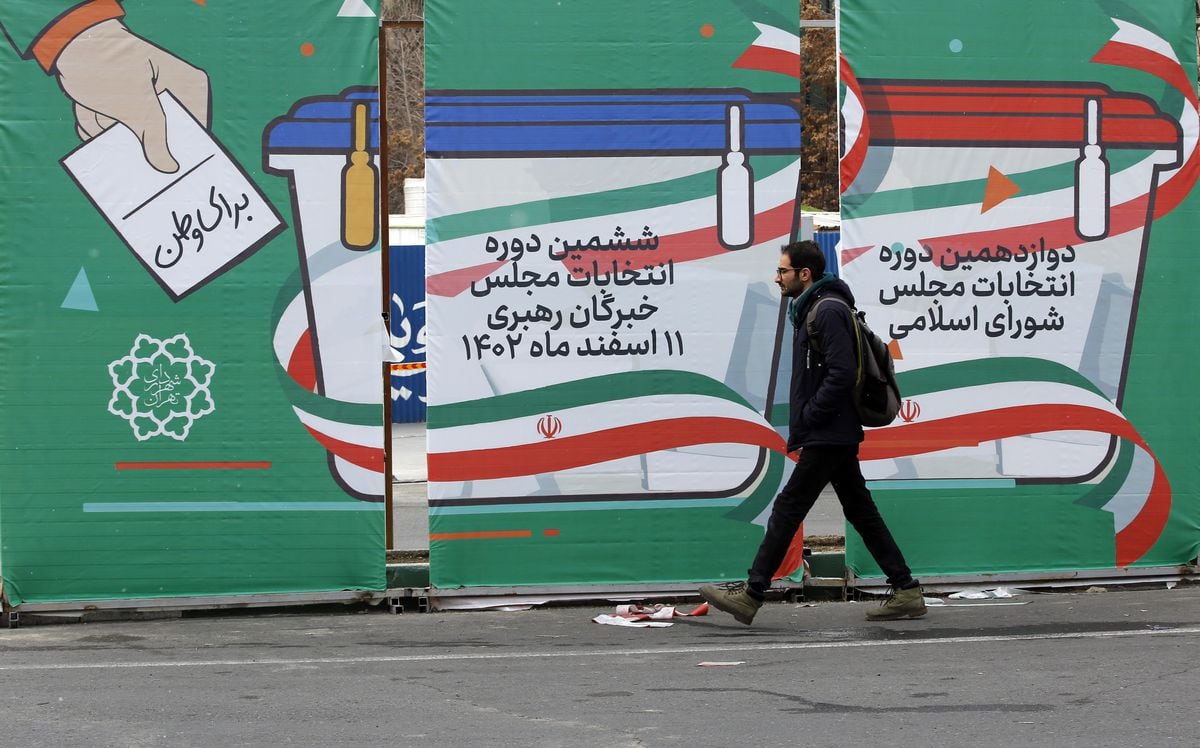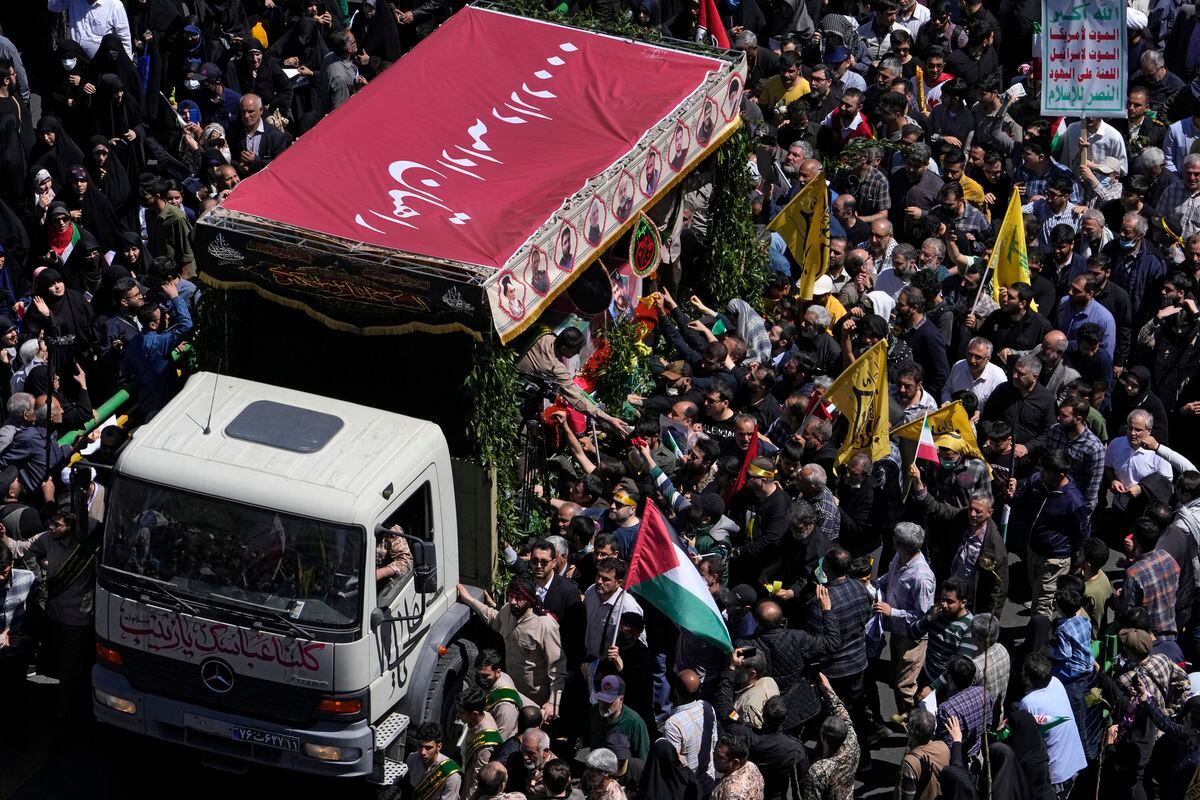Amir Mohammad Ahmadi and Astiaj Haghighi are two Iranian bloggers aged 22 and 21, respectively.
In October, when the protests against the Iranian regime were raging, they shared a video on social networks in which they appeared dancing together in front of the iconic monument in Tehran's Azadi (Freedom) Square, a gesture that was interpreted as a show of support for the Iranians. protesters.
The young woman was not wearing the veil that is still mandatory in Iran.
On November 1, days after posting that 16-second recording, they were both arrested.
This Sunday, section 15 of the Tehran Revolutionary Court sentenced them to 10 and a half years in prison each for "fomenting corruption, [illegal] assembly and collusion with the intention of disturbing national security and disseminating propaganda."
Iran Wire
.
Ahmadi and Haghighi have also been banned from all internet activity and from leaving the country for two years when released from prison.
POUR AVOIR DANSÉ ensemble sur la place Azadi (Liberté) de Téhéran, Astiaj Haghighi et Amir-Mohammad Ahmadi, couple de blogueurs, viennent d'être condenés chacun à 10 ans et demi de prison, apprend-on des médias @VOAfarsi et @RadioFarda_ .
Credit: @Tavaana pic.twitter.com/SI9Iwv5thK
— Armin Arefi (@arminarefi) January 29, 2023
In Iran, women are prohibited from dancing in the street and even more so if they do it with a man, even if it is an engaged couple, like Ahmadi and Haghighi.
However,
IranWire
links this harsh sentence, rather than the ban, to the crackdown on protests that began with the death in police custody of Mahsa Amini on September 16, three days after the 22-year-old was arrested. in Tehran by the morality police, who accused her of wearing the veil incorrectly.
Since then, at least 488 Iranians have been killed in the crackdown, while more than 18,000 protesters have been detained and at least four executed, according to data from the Oslo-based Iranian NGO Iran Human Rights.
Ahmadi and Haghighi were arrested on November 1 by plainclothes officers who beat them and took them to ward 209 of Tehran's Evin prison, notorious for housing political prisoners and controlled by the Iranian Intelligence Ministry, reports
IranWire
.
Numerous testimonies from former inmates of these facilities have described the existence in them of a torture chamber where electric current is applied to the prisoners or they are subjected to other punishments such as being suspended in the air by their feet with their hands tied behind their backs for prolonged periods of time.
Trials without guarantees
After more than four months of popular protests under the slogan "Woman, life and freedom" and against the Islamic Republic —which will celebrate its 44th anniversary on February 11—, the fatigue and repression by the security forces and the paramilitaries appear to have managed to quell the demonstrations, at least for the moment.
According to the Critical Threats organization's website monitoring the crisis in Iran, only a small demonstration was registered in Tehran this Sunday, in contrast to the dozens of marches throughout the country that were reported weeks ago.
In the previous days, this website had reported small protests in other areas of Iran, but for economic rather than political reasons.
The repression, however, has gone from taking place on the street to taking place in the courts, according to organizations such as Iran Human Rights, especially in the revolutionary courts, a parallel system to the regular one, created in 1979 and whose purpose is to protect the regime. Iranian.
In its rooms, dissidents and critical journalists are usually tried and those detained in the demonstrations are parading before its judges these days.
International organizations such as Amnesty International and Human Rights Watch consider that these courts are the battering rams of repression in Iran and that the processes that take place in them lack guarantees.
Amir Ahmadi and Astiaj Haghighi have been sentenced by one of those courts, the one at number 15 in the Iranian capital, which denied them the right to choose a defense lawyer and also denied their request for bail, according to
IranWire
.
The presiding judge at that court is Abolqasem Salavati, nicknamed "the hanging judge" by Iranian human rights activists because of the ease with which death sentences, which in Iran are carried out by hanging.
Other methods of execution, such as crucifixion and stoning, are still legal.
Salavati's signature issued the death sentence, carried out on January 14, against the British-Iranian citizen Alireza Ajbari, for "corruption on earth", among other serious charges.
Both the European Union and the United States have sanctioned Salavati, in 2011 and 2019, respectively, for the serious human rights abuses attributed to him, especially violations of procedural guarantees and the right to defense of the accused.
Follow all the international information on
and
, or in
our weekly newsletter
.

/cloudfront-eu-central-1.images.arcpublishing.com/prisa/CBPZKROQRKSTZAZKAKK7FGHRZI.jpg)

/cloudfront-eu-central-1.images.arcpublishing.com/prisa/AD2TMVZ5XQUDUGJNBTOYF4FIIA.jpg)


/cloudfront-eu-central-1.images.arcpublishing.com/prisa/RSDYMJQAS5HZZJNOQTAQ3E4FYI.jpg)








